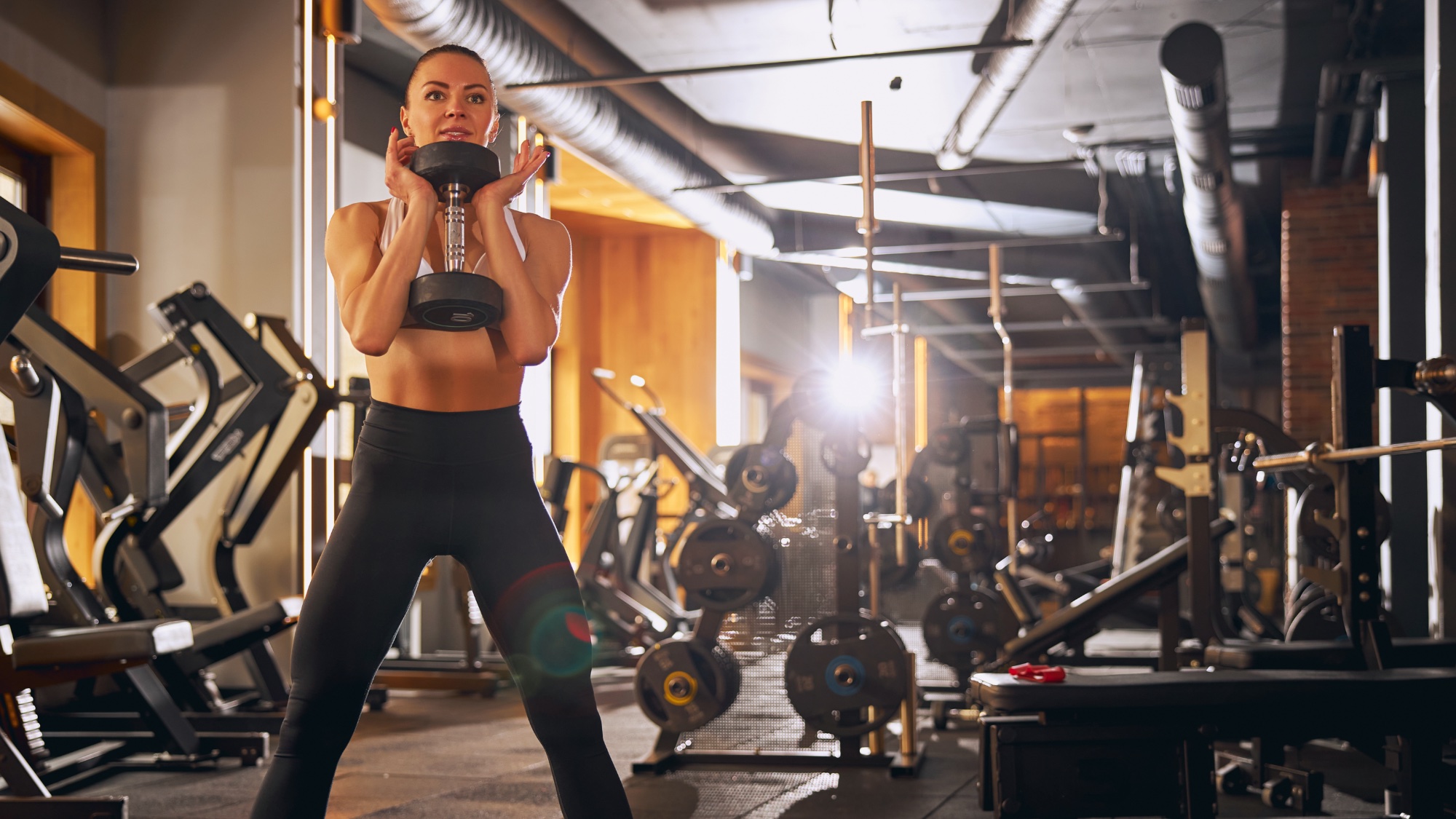
Build muscle and strength in your legs and glutes with this 20-minute dumbbell workout — without any gym machines or lengthy workout classes. All you need is a pair of dumbbells, six moves, and 20 minutes to target the quads, hamstrings, calves, glutes, and core muscles.
Finding a lower-body workout worth bookmarking can be a minefield, but this one will send you into beast mode on leg day. CelaMarr uses two dumbbells, but some exercises only require one, and you can go lighter and increase your reps per 40 seconds to work on muscle endurance. Otherwise, I recommend lifting heavy, aiming for 8-12 reps consistently, and working to fatigue on the last few reps of each exercise.
I also recommend the best adjustable dumbbells because you can manually adjust the weight depending on the exercise, but you could use anything from a kettlebell to a water bottle. Get ready to work your entire lower body with this circuit strength training routine, but if you prefer to focus on growing your glutes, I swear by this 7-minute glutes workout using one medium resistance band.
Watch the CelaMarr 20-minute dumbbell leg workout
The workout features these staple leg exercises:
Goblet squat
Goblet alternating reverse lunges
Sumo squat
Get instant access to breaking news, the hottest reviews, great deals and helpful tips.
Front squat
Good mornings
Calf raises
You’ll perform the exercises as a circuit for 40 seconds, followed by 20 seconds of rest and 30 seconds between rounds, totaling three rounds.
The exercises and format are simple and nothing ground breaking, but the programming is still intelligent enough without overcomplicating it. The format allows you to reach a rep rate of between 8-12 for three rounds of the six exercises, which utilize the popular hypertrophy training method used to grow muscle.
Try to lift the weight at a submaximal effort. That means working with a heavy weight that isn’t the maximum you could lift — keep this aside for testing your one-rep max! Somewhere between 70-90% effort is ideal, so you should feel like you’re really working to hit the last few reps.
Although it’s been long accepted that lifting maximal weight offers strength gains, moderate loads relate to hypertrophy, and low-load training reserved for muscle endurance, according to some research published to MDPI which re-examined common loading recommendations.
Interestingly, a “compelling body of literature” indicates that muscle growth can be accessed at various loading ranges, suggesting there’s no “ideal hypertrophy zone.” However, the findings also found that moderate loads are the most efficient way to develop muscle, as light load training requires higher rep ranges than heavier weights.
Whether you lift heavy, medium, or light weights, you’ll hit most of your leg muscles using these compound exercises (multi-joint, multi-muscle moves) rather than isolation exercises like a hamstring curl which only focuses on one muscle group. It means you won’t need an hour's gym program — 20 minutes is enough to hit the targeted muscles efficiently and reach fatigue.
Muscles worked
It’s a lower-body workout, but your core muscles will work to stabilize and support each movement. That said, each move has its focus.
Front squats front load the body and work the anterior chain muscles (the front of your body) — they’re considered a quad-dominant exercise, so you can expect a good pump in your quads. The good-morning is back-loaded, working the posterior chain, including your hamstrings, glutes, and lower back.
Sumo squats adopt a wider stance with toes pointed slightly outward, targeting the same muscles as squats with a focus on the adductors (inner thigh muscles), outer glutes (the gluteus medius), and hip flexors. Goblet reverse lunges and squats refer to the position of the dumbbell at your chest but work the same muscles you’d find in a “normal” squat or lunge — your glutes, core muscles, hamstrings, quads, hip flexors, and calves.
However, you can adopt a quad-dominant stance in the squat by narrowing your foot stance to hip-width apart (learn how to squat here). And a slight lean forward of your torso during lunges can help to activate your glutes and hamstrings more. Then we have calf raises, which (no shock here) work your calves, but also improve ankle stability and balance, and the core muscles will switch on to keep you upright.
Leg workouts can be done two to three times a week, with rest days between, which allows your muscles to recover and rebuild. On these days, think of adding an upper body workout into the mix, like the best dumbbell chest workouts or this shoulder workout to hone your shoulder muscles. Suffer from hip flexor pain? This one moves every day to reduce hip flexor pain using the Frog pose.

Sam Hopes is a level 3 qualified trainer, a level 2 Reiki practitioner and fitness editor at Tom's Guide. She is also currently undertaking her Yoga For Athletes training course.
Sam has written for various fitness brands and websites over the years and has experience across brands at Future, such as Live Science, Fit&Well, Coach, and T3.
Having coached at fitness studios like F45 and Virgin Active and personal trained, Sam now primarily teaches outdoor bootcamps, bodyweight, calisthenics and kettlebells.
She also coaches mobility and flexibility classes several times a week and believes that true strength comes from a holistic approach to training your body.
Sam has completed two mixed doubles Hyrox competitions in London and the Netherlands and finished her first doubles attempt in 1:11.

